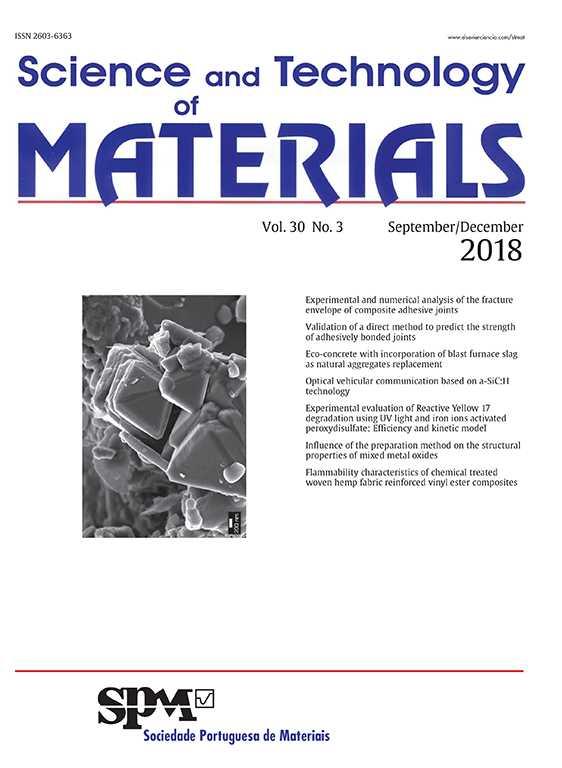The present study is focused on the characterization of ultrafine particles emitted in welding of steel using mixtures of Ar+CO2, and intends to analyze which are the main process parameters which may have influence on the emission itself. It was found that the amount of emitted ultrafine particles (measured by particle number and alveolar deposited surface area) are clearly dependent from the distance to the welding front and also from the main welding parameters, namely the current intensity and heat input in the welding process. The emission of airborne ultrafine particles seem to increase with the current intensity as fume formation rate does. When comparing the tested gas mixtures, higher emissions are observed for more oxidant mixtures, that is, mixtures with higher CO2 content, which result in higher arc stability. The later mixtures originate higher concentrations of ultrafine particles (as measured by number of particles by cm3 of air) and higher values of alveolar deposited surface area of particles, thus resulting in a more hazardous condition regarding worker's exposure.
Información de la revista
Vol. 26. Núm. 1.
Páginas 1-8 (enero - junio 2014)
Vol. 26. Núm. 1.
Páginas 1-8 (enero - junio 2014)
Acceso a texto completo
Emission of airborne ultrafine particles during welding of steel plates
Visitas
1670
a IBB / Instituto Superior Técnico – Universidade de Lisboa, Av. Rovisco Pais, 1049-001 Lisboa, Portugal
b ADEQ, ISEL – Instituto Superior de Engenharia de Lisboa, R. Conselheiro Emídio Navarro, 1959-007 Lisboa, Portugal
c UNIDEMI, DEMI, Faculdade de Ciências e Tecnologia, FCT, Universidade Nova de Lisboa, 2829-516 Caparica, Portugal
Este artículo ha recibido
Información del artículo
Abstract
Keywords:
arc welding
welding fumes
ultrafine particles
alveolar deposited surface area.
El Texto completo está disponible en PDF
References
[1]
J. Gomes, Higiene e Segurança da Soldadura, ISQ, Oeiras, 1983 (in Portuguese).
[2]
I. Pires, L. Quintino, R. Miranda, J. Gomes.
Tox. Env. Chem, 88 (2006), pp. 385
[3]
C. Ascenço, J. Gomes, N. Cosme, R. Miranda.
Tox. Env. Chem, 87 (2005), pp. 345
[4]
J. Gomes, P. Albuquerque, R. Miranda, M. Vieira.
J. Tox. Env. Health - A, 75 (2012), pp. 747
[5]
N. Jenkins, T. Eager.
Weld. J., Supp, 87 (2005),
[6]
J. Dasch.
J. D’Arcy, J. Occ. Env. Hyg, 5 (2008), pp. 444
[7]
G. Buonanno, L. Morawska, L. Stabile.
J. Aer. Sci, 42 (2011), pp. 295
[8]
B. Moroni, C. Viti.
Aer. Sci, 40 (2011), pp. 938
[9]
K. Elihn, P. Berg, G. Liden.
J. Aer. Sci, 42 (2011), pp. 127
[10]
G. Oberdörster, R. Gelein, J. Ferin, B. Weiss.
Inh. Tox, 7 (1995), pp. 111
[11]
D. Rickerby, M. Morrison.
Sci. Tech. Adv. Mat, 8 (2007), pp. 19
[12]
G. Oberdörster.
Int. Arch. Occ. Env. Health, 74 (2001), pp. 1
[13]
W. Kreyling, M. Semmler, F. Erbe, P. Mayer, S. Takenaka, H. Schulz, G. Oberdörster, A. Ziesenis.
J. Tox. Env. Health – A, 65 (2002), pp. 511
[14]
R. Phalen, Particle Size-selective sampling for particulate air contaminants, Ed. J.H. Vincent, ACGIH, Cincinnati, 1999.
[15]
J. Gomes, P. Albuquerque, R. Miranda, T. Santos, M. Vieira.
Inh. Tox, 24 (2012), pp. 774
[16]
B. Berlinger, N. Benker, S. Weinbruch, B. L’Vov, M. Ebert, W. Koch, D. Ellingsen, Y. Thomassen.
Anal. Bioanal. Chem, 399 (2009), pp. 1773
[17]
I. Pires, L. Quintino, R. Miranda.
Mat. Des, 28 (2007), pp. 1623
[18]
O. Santos, L. Quintino, Processos de soldadura, ISQ, Lisboa, 1999 (in Portuguese).





